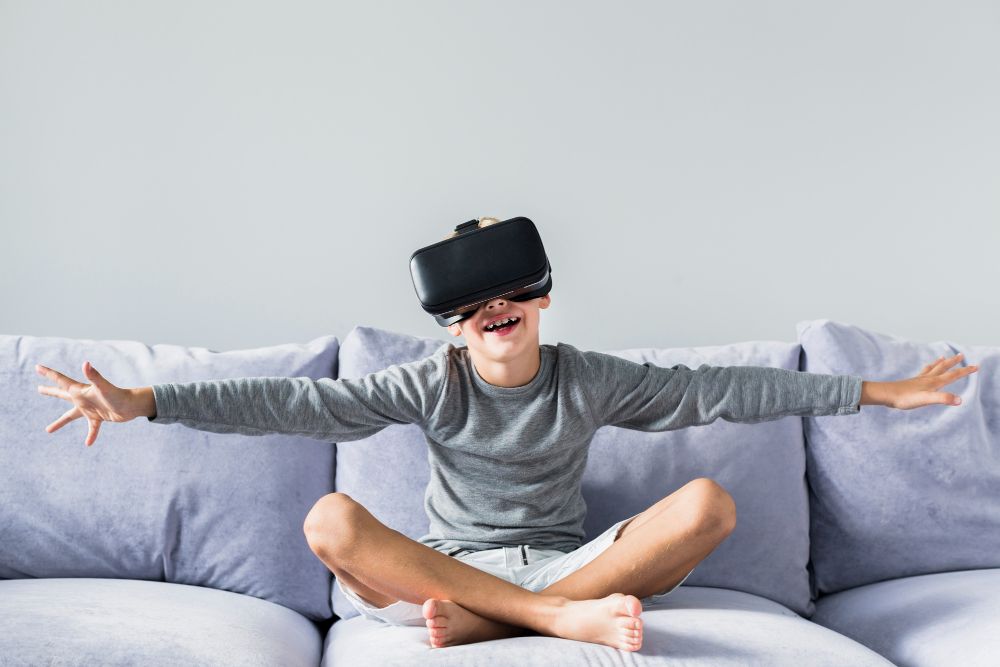Remember the old days of classroom learning with chalkboards?
Well, now it’s a matter of curiosity for modern students having digital learning in the classroom!
This is a fast-paced world where technology is used in every aspect.
Students’ academic engagement has also been dramatically altered by tech in classrooms!
The use of digital tools to improve learning experiences is increasing daily across all educational levels, from elementary school to college. The outcome is also evident: better engagement and learning capabilities!
Well, now this tech has again taken a new step towards progress!
VR and haptic feedback technologies are the most fascinating new advancements in this field.
These developments reshape how kids engage with technology in the classroom and beyond. Educators and software developers have been exploring more immersive and engaging ways to keep students involved in recent years due to the rising need for remote learning solutions.
Services like DoMyEssay, which provide students individualized writing assistance in the form of “Write My Paper,” are becoming increasingly popular! Virtual reality (VR) and haptic feedback systems exemplify how this shift toward digital convenience paves the way for even more sophisticated technological integrations in the classroom.
So, let’s look at how this newly emerged tech can help the learning process!
You may also like to read: Top 10 Free ChatGPT Courses You Can Take Online
The Role of Haptic Feedback in Virtual Learning
We can utilize haptic feedback in the learning process in multiple ways, so let’s dive deep and understand how this technique can be used!
Understanding Haptic Feedback
Do you want to feel the real-life education process where you can explore and learn?
Well, thanks to haptic feedback technology, delivering you effortless responses!
Users may feel and interact with virtual items as if they were real!
This allows for a more hands-on learning experience for students in VR-driven classrooms.
They can do things like feel the weight of historical artifacts or comprehend the inner workings of complicated machines. To keep students’ attention and improve their information retention, it is essential to create virtual learning environments that are more realistic and engaging.
This sensory enhancement helps with that.
The improved realism helps with understanding and putting theoretical information into practice!
Benefits for Remote Learners
Do you feel disconnected while you are in an online class?
Well, the reason is because you can’t feel what your educators are saying in front of you!
Haptic feedback can help you to succeed in both classroom and home settings.
It adds a physical dimension to learning that may be lacking in entirely online programs.
It is super helpful for students in chemical laboratories and mechanical engineering classes. These topics involve a lot of physical contact, so students can easily check the molecule level and atomic construction! They can gain hands-on experience that would be impossible in a traditional classroom setting.
This technology also facilitates the simulation of complicated processes and experiments, enhancing the learning process’s effectiveness and interactivity. So, if you are a mentor, you can try it out!
Accessibility and Customization
Ever wondered how you can mentor disabled students in a better way?
Well, haptic feedback caters to a diverse student segment!
Mentoring intelligent learners was not an issue, but the flexibility of haptic feedback helped students with disabilities. It is another major plus for distance learning! As a result, haptic devices provide an inclusive learning tool that can be adjusted to accommodate a wider range of learning styles and demands.
It helps visually or aurally challenged people by allowing them to feel vibrations or motions representing visual or audio information. Allowing users to customize these parameters to their liking allows virtual learning environments to be accessible to all students!
Integrating VR into Student Assignments
Haptic feedback can be helpful in the learning process, but how can we use VR? Well, let’s see how VR can help students with their assignments!
Enhancing Engagement Through Immersive Technology
Using virtual reality in the classroom goes beyond simply watching videos!
VR headsets take students to a world where their textbooks come to life.
When students can interactively explore and modify 3D representations of astronomical bodies or geometric shapes, this immersive experience benefits disciplines that demand abstract thinking, like advanced mathematics or astronomy.
Engaging with these models enhances one’s comprehension of the material by giving concrete form to otherwise intangible ideas. So, try to get an experience of this soon!
Virtual Reality for Practical Skills
Are you an automobile engineering student and willing to get hands-on experience?
Well, VR is great for teaching practical and theoretical skills!
For example, before entering an actual operating room, medical students can practice and perfect their skills in a safe environment by conducting virtual surgeries. Similarly, architecture students can virtually tour their projects, gaining a feel for the space-time relationships that would be impossible with flat plans.
Because it provides a safe space for students to experiment and learn from their mistakes, this practical application is critical in professions where hands-on experience is critical to success.
Collaboration and Teamwork in Virtual Spaces
Who doesn’t like collaboration while working on a project?
That’s why we humans are called social beings!
Students are also encouraged to work together through VR. Students worldwide can collaborate on projects, exchange ideas, and resolve issues virtually as if they were all in the same room. Students are more equipped for a distant and digitally connected job if they can learn to cooperate in a virtual space, which is more exciting and realistic.
To help students develop the cooperation and communication abilities necessary for success in today’s globalized corporate world, virtual collaboration tools are made to look and feel very much like real-life interactions!
Conclusion
Virtual Reality (VR) and Haptic Feedback are the game changers in distance learning!
These tools aid in making online learning more exciting and participatory.
They are helping students feel less alone when taking more conventional online classes. They also give students the hands-on experience essential to a well-rounded education. With the help of highly regarded essay writing services, distance learning has the potential to become even more effective as these technologies advance.
The educational landscape of the future appears to be more inclusive, dynamic, and immersive than in the past, according to students, teachers, and digital companies. And it is high time we utilize these technologies and get the best out of them!

